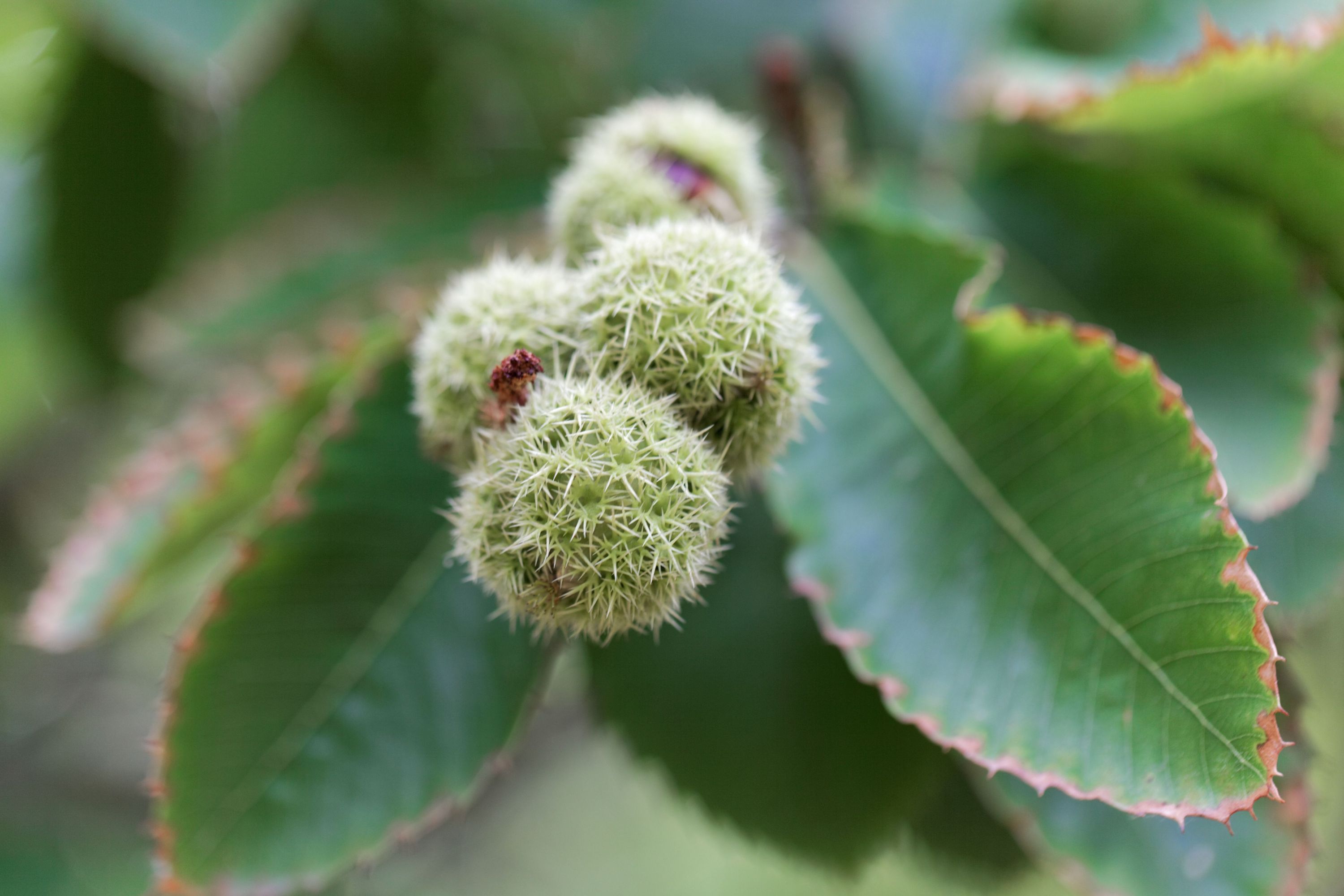Allegheny Chinkapin
(Castanea pumila)

Description
Castanea pumila, commonly known as the Allegheny chinquapin, American chinquapin (from the Powhatan) or dwarf chestnut, is a species of chestnut native to the southeastern United States. The native range is from Maryland and extreme southern New Jersey and southeast Pennsylvania south to central Florida, west to eastern Texas, and north to southern Missouri and Kentucky. The plant's habitat is dry sandy and rocky uplands and ridges mixed with oak and hickory to 1000 m elevation. It grows best on well-drained soils in full sun or partial shade. The flowers are monoecious and appear in early summer. Male flowers are small and pale yellow to white, borne on erect catkins 10–15 cm (4–6 in) long attached to the base of each leaf. Female flowers are 3 mm (0.12 in) long and are located at the base of some catkins. Allegheny chinquapin occurs in mixed hardwood forests among pine and oak trees on high ridges and slopes that are free from limestone. It grows on black sandy dunes in the Carolinas, but not on frontal dunes. It is also found on well-drained stream terraces, dry pinelands, and disturbed sites such as railroad rights- of-way, power line clearings, fence and hedgerows, pine plantations, and old fields. Allegheny chinquapin is closely related to the American chestnut, Castanea dentata, and both trees can be found in the same habitat. Allegheny chinquapin can be distinguished by its smaller nut (half the size of a chestnut) that is not flattened (chestnuts are flattened on one side). The leaves of the Allegheny chinquapin are smaller than the American chestnut and have less distinct teeth. Allegheny chinquapin, however, is less susceptible to the chestnut blight fungus that devastated the American chestnut. While the chinquapin does blight to some degree, it continues to send out suckers that will produce fruit. Chinquapins are quite vulnerable nevertheless, and there are many reports of heavily diseased and cankered trees. John Smith of Jamestown made the first record of the tree and its nuts in 1612, observing its use by the Native Americans. Native Americans made an infusion of chinquapin leaves to relieve headaches and fevers. The bark, leaves, wood, and seed husks of the plant contain tannin. The nuts can be blanched, dried, and rehydrated to be prepared as food. The wood is hard and durable and is sometimes used in fences and fuel, but the plant is too small for the wood to be of commercial importance.
Taxonomic tree:







